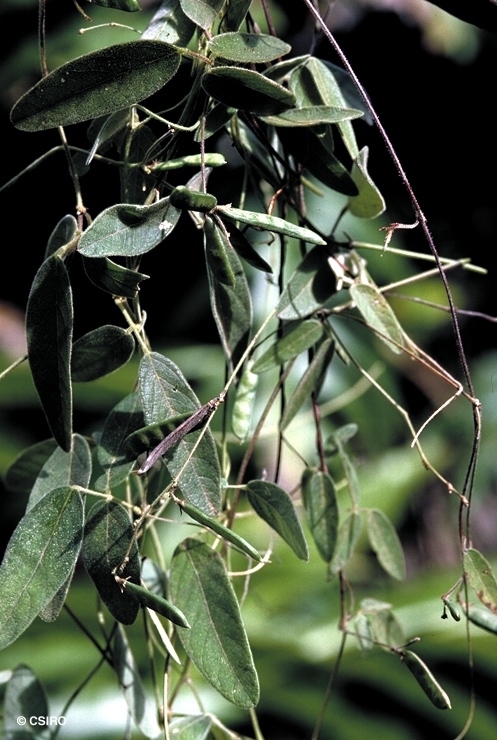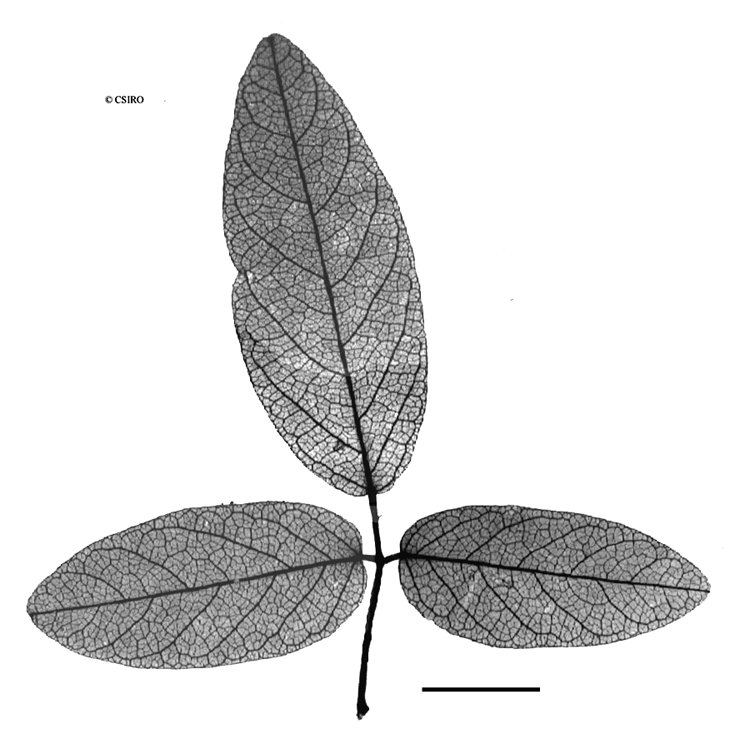Australian Tropical Rainforest Plants - Online edition
Galactia sp. Laura (J.C.Tothill JT53A) Benth.



Provisional HISPID phrase name.
A slender vine not exceeding a stem diameter of 2 cm.
Leaflet blades about 2.5-6.5 x 1-2.2 cm, middle leaflet larger than the laterals, lateral leaflet stalks about 1-2 mm long, middle leaflet stalk about 10 mm long. Lateral veins about 7-9 on each side of the midrib. Upper and lower leaflet blade surfaces clothed in floccose white hairs. Stipules hairy, lanceolate, about 2.5 mm long.
Inflorescence up to 10 cm long. Flowers about 10 mm diam., each flower subtended by two hairy, lanceolate bracts. Calyx tube about 2 mm long, lobes narrow, about 4-7 mm long, clothed in bristly hairs. Petals: standard obovate, about 12-14 mm long with a greenish patch near the base; wings and keel about 10-12 mm long. Stamens 10, the filaments of 9 stamens fused to form a tube about 6-8 mm long, open on one side. Free part of the filaments about 2-3 mm long. One stamen free, filament about 8 mm long. Ovary elongated, densely clothed in bristle-like hairs. Style hairy towards the base but glabrous near the apex. Ovules six to ten.
Features not available.
Occurs in NEQ. Altitudinal range from near sea level to 600 m. Usually grows in open forest but also found in vine thicket and monsoon forest. Also occurs in New Guinea.
Although common in native rangelands, no information is available on acceptability to stock. Fire-tolerant but sensitive to flooding. Hacker (1990).





